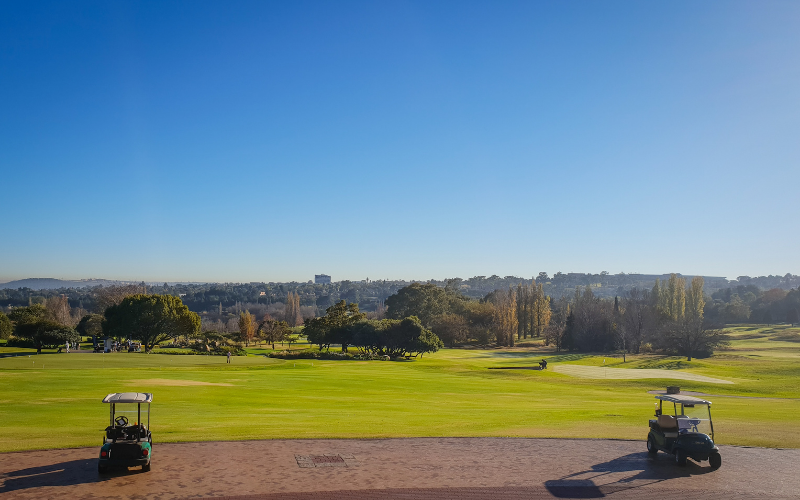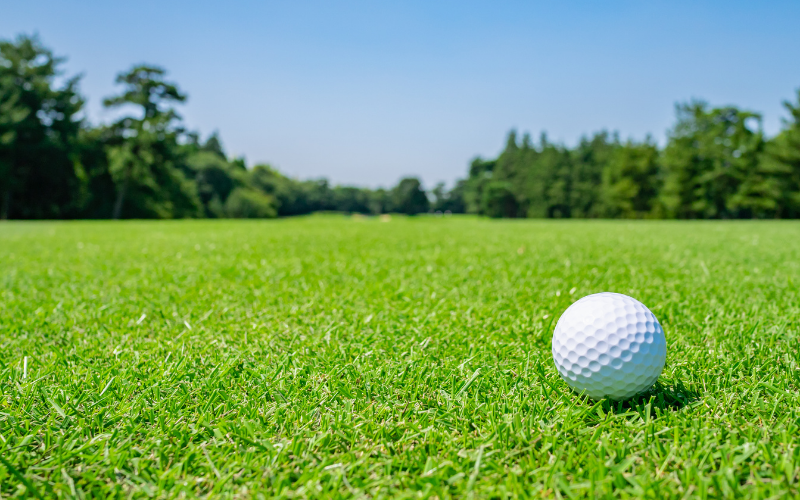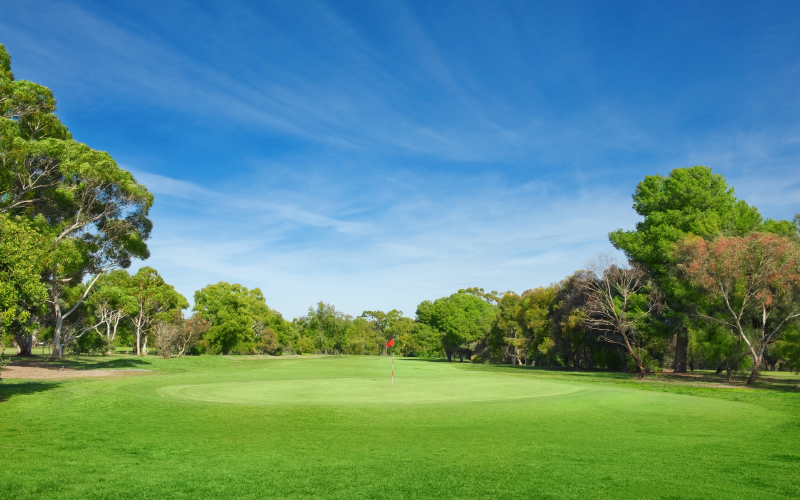The management of golf course grasses is a full-time job. The structure beneath the grass can often be just as important as the quality of the greens on top and, without this structure, a consistent experience wouldn’t be possible. However, the look and feel of the grass types used on a golf course are undeniably the gold standard for any type of lawn. Below you can learn what types of grass are preferred by professional golf courses as well as where and why they are used.
What Kind of Grass Do Golf Courses Use?
The type of grass a golf course will use depends on the location of the golf course, geographically, and the location of the grass within the scheme of the golf course. For example, a golf course in a tropical, hot, and humid location may use Zoysiagrass for its greens and annual ryegrass for the roughs to maintain an even playing surface and an attractive green appearance all year. However, these grass types would struggle to survive in a drier, northern climate.
Types of Grass Golf Courses Use
Below are the 7 most popular grass types for golf courses. Keep in mind that all of these are just the grass types and each golf course will select the most appropriate strain for its location. Nearly all of these grass types, except ryegrass and zoysiagrass, have hundreds of strains.
Bermuda Grass
What grass do golf courses use the most? The answer is undeniably “Bermuda Grass”. Bermuda grass has been used on golf courses for so long that there are dozens of different varieties that have been developed just for golf course use. This is an ideal golf course grass as it is easily cut low and even and has a relatively slow-growing habit.
Creeping Bentgrass
Creeping bentgrass is only second to Zoysia when it comes to thickness. It easily crowds out weeds and can be mown nearly to the ground without fear of damaging it. Bentgrass is ideal for cooler northern climates.
Annual Bluegrass
This type of grass is classified as an invasive species in most climates and is being phased out in favor of other grasses on many golf courses. The exception to this is golf courses on the West Coast of the United States where it is used as, though it is not a durable or thick grass type, it is low growing and uses little water.
Zoysia
As a soft, thick, durable grass type, Zoysia makes an excellent grass for golf fairways and putting greens. It is used in many tropical golf courses for its heat tolerance. However, this is not a popular choice for three main reasons in any other climate. First, zoysia requires high temperatures to become and remain green (greater than 70F). Second, zoysia grows and produces thatch more quickly than creeping bentgrass, bermudagrass, and annual bluegrass. Last, zoysia can quickly overtake nearby greens and edge out nearly any other established grass. Keeping this variety where it’s supposed to be can become expensive.
Ryegrass
Perennial rye is a grass type with high durability and a pleasant texture. Though not as hearty as Kentucky Bluegrass, it is more resilient in higher temperatures and is often used on the rough or outside of the fairways in many golf courses. This is a popular variety for golf courses in more southern climates. In even hotter climates, annual ryegrass can be used and will not wither at the end of each season.
Kentucky Bluegrass
Though not used on the fairways of a golf course, Kentucky Bluegrass is one of the top choices for the rough for any high-traffic areas around the golf course. Other, softer bluegrass varieties are frequently added into a mix of grasses to create the grass on golf course fairways.
Fine Fescue
Though not often used on golf courses in the USA, fine fescue is the grass of choice for traditional Scottish golf courses and other European golf courses. Though this variety is not quite as low-growing or tightly woven as the other varieties listed here, it does have a finer texture and can provide a unique experience.
What Type of Grass is Used on Golf Course Fairways?
Golf course fairways require grass that is short and even. Bentgrass is the most common grass in these areas. However, a mix of grasses is often used to provide just the right texture and durability. This mix is often predominantly bentgrass but may include perennial rye, annual ryegrass, and bluegrass. Outside of the USA, fine fescue is also used on golf course fairways in colder northern climates with less traffic.
What is the Best Grass for Golf Greens?
Golf course greens also need to be cut evenly with grass that grows thick and even. The best grass for golf greens is creeping bentgrass or bermudagrass, with bentgrass being more common. Both types of grass are also available in dozens of different strains meant to be used in different conditions. To get the right feel, lawn professionals may even choose different strains for different sections of the same golf course.
Golf Courses Use the Grass Type That Suits Their Needs
No golf course uses only one type of grass, especially in the USA. Often three or more types can be found on any golf course and as many as several dozen strains may be employed there. This is only possible because each golf course employs full-time turf professionals.





Leave a Reply